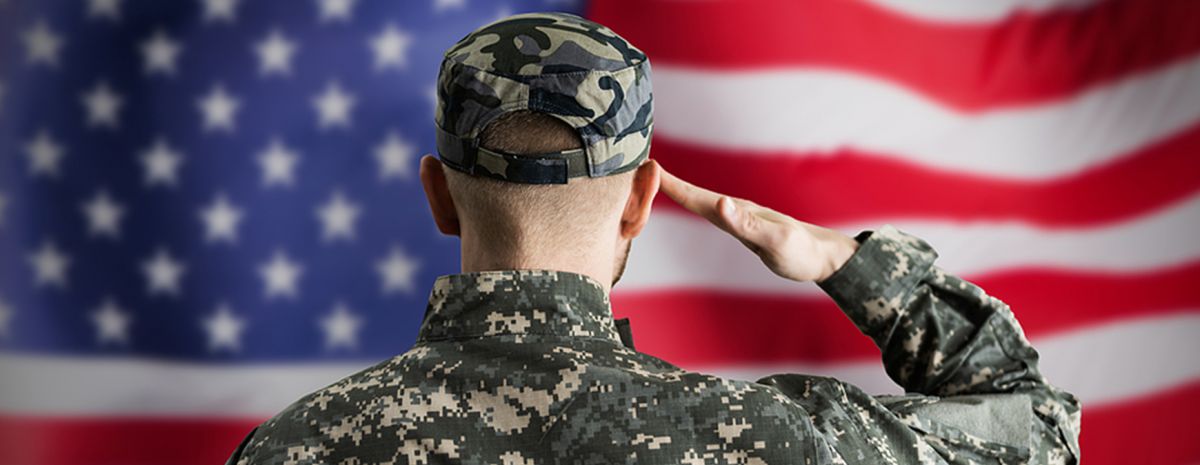RSI is a Great Training Option for Everyone
Learn more about how we can prepare you to advance your career.
Veterans face unimaginable experiences when protecting the freedoms and safety Americans enjoy at home. These heroic sacrifices mean that service members can face some different challenges when transitioning from military life to civilian life.
A key aspect of the transition is finding a rewarding and interesting career that fulfills the needs of Veterans.
Although come service members can feel behind their civilian counterparts, they leave the military with highly competitive skills.
The trick is finding the right path. Here, we’ll explore some reasons Veterans should consider hands-on training and related careers when rejoining civilian life.
1. Their skills are transferable.
Some careers Veterans can pursue are those requiring the same skills they develop during military service. The hands-on training that service members are used to in the armed forces carries over well to the skilled trades, since these professionals require people to work with their hands.
Get Started on the Path to a New Career
Fill out our form to learn how we can help you change your life.
In contrast to undergraduate degree programs that focus a lot on theory, trade school programs are heavily oriented towards practical application and hands-on learning, which veterans excel at due to their experience in the military.
2. They can train with fellow Veterans.
15% of service members enroll in a vocational or technical program, according to the mental health portion of the US Department of Veterans Affairs’ website. Since Veterans differ from the average student in age, family life, and experiences, feelings of isolation aren’t uncommon for service members returning to school.
Hands-on training and careers can give you an opportunity to work alongside fellow Veterans to make the transition easier.
3. Hands-on jobs are in high demand.*
The skilled trades sector has been experiencing a major shortage of qualified workers, resulting in huge demand for talented tradespeople.
According to Angi’s Skilled Trades Report, the vast majority of trades employees believe there’s a significant lack of available labor despite the wealth of job opportunities available.
Veterans who are interested in training for an in-demand career with no shortage of options should consider pursuing a skilled trades profession. The greater the need for your skills, the more options you’ll have when choosing where and for which company you work.
4. These careers pay well.
There’s a popular misconception that hands-on careers such as the skilled trades don’t pay well. Income isn’t everything when considering a job, but many Veterans pursue further education to achieve a better quality of life for their families so earning potential is an important factor.
In reality, Veterans can qualify for good-paying jobs after completing a trade school program.
For example, here are the median salaries of several skilled trades jobs, according to the Bureau of Labor Statistics:
Welder: $47,010
HVAC technicians: $48,630
Electricians: $60,040**
These are competitive incomes when compared to the average degree holder, who makes around $55,260 annually, according to a report by the National Association of Colleges and Employers.
5. Veterans can access the job market quickly.
Veteran students may be a little older than their “traditional” counterparts because of the time they sacrificed to protect their country. Due to this age difference, some service members might want a quicker route into a meaningful civilian professional than a four-year degree can offer.
The majority of bachelor’s degree holders even take six years to complete their degree. Service members can gain the training, skills and qualifications necessary to become a skilled tradesperson in a fraction of that time by joining trade school programs. Through hands-on learning, these programs make it possible for Veterans to enter a career quickly.
6. They have a chance to serve their community.
Veterans have risked their lives to protect and serve their country. This sense of duty and commitment doesn’t always stop when service members return to civilian life.
If you’re looking for a career where you can gain a similar feeling of pride when serving others, the skilled trades might pique your interest. Through these careers, service technicians keep their local communities healthy, comfortable, and safe by ensuring basic systems continue running optimally.
You can continue to help people, like you did during your military service.
7. The GI Bill® covers many hands-on training programs.
Cost is an obvious obstacle preventing many non-traditional students like Veterans from returning to school after military service. The lower average cost of trade school programs is an attractive factor for people who aren’t interested in raking up mountains of student debt.
Veterans can save even more money by putting their Veteran’s benefits to use. The GI Bill® covers tuition to nearly all trade schools so service members can achieve a smoother transition to civilian life.
Military Education Benefits Defined
GI Bill®
The GI Bill® is funding from the Department of Veterans Affairs to help service members and veterans cover tuition and other costs related to going to vocational school. There are multiple programs under the GI Bill®. Eligibility requirements and funding amounts vary across programs.
Military Tuition Pricing
Special tuition rates may be available to service members, Veterans, and their families.
Check out potential career opportunities for military Veterans to learn more about the possibility that hands-on training offers.
* According to BLS data Arizona employed 7,950 Heating, Air Conditioning, and Refrigeration Mechanics and Installers (499021), 640 Welders (514122), and 14,450 Electricians (472111) through May 2020 http://data.bls.gov/oes.
**Average starting salary for Refrigeration Technologies is $37,078, $41,548 for Welding Specialist, and $38,022 for Electrical Applications for RSI graduates employed during the 12 month period of 7/1/20 – 6/30/21.
Additional Sources
This blog has been labeled as archived as it may no longer contain the most up-to-date data. For a list of all current blog posts, please visit our blog homepage at https://www.rsi.edu/blog/




